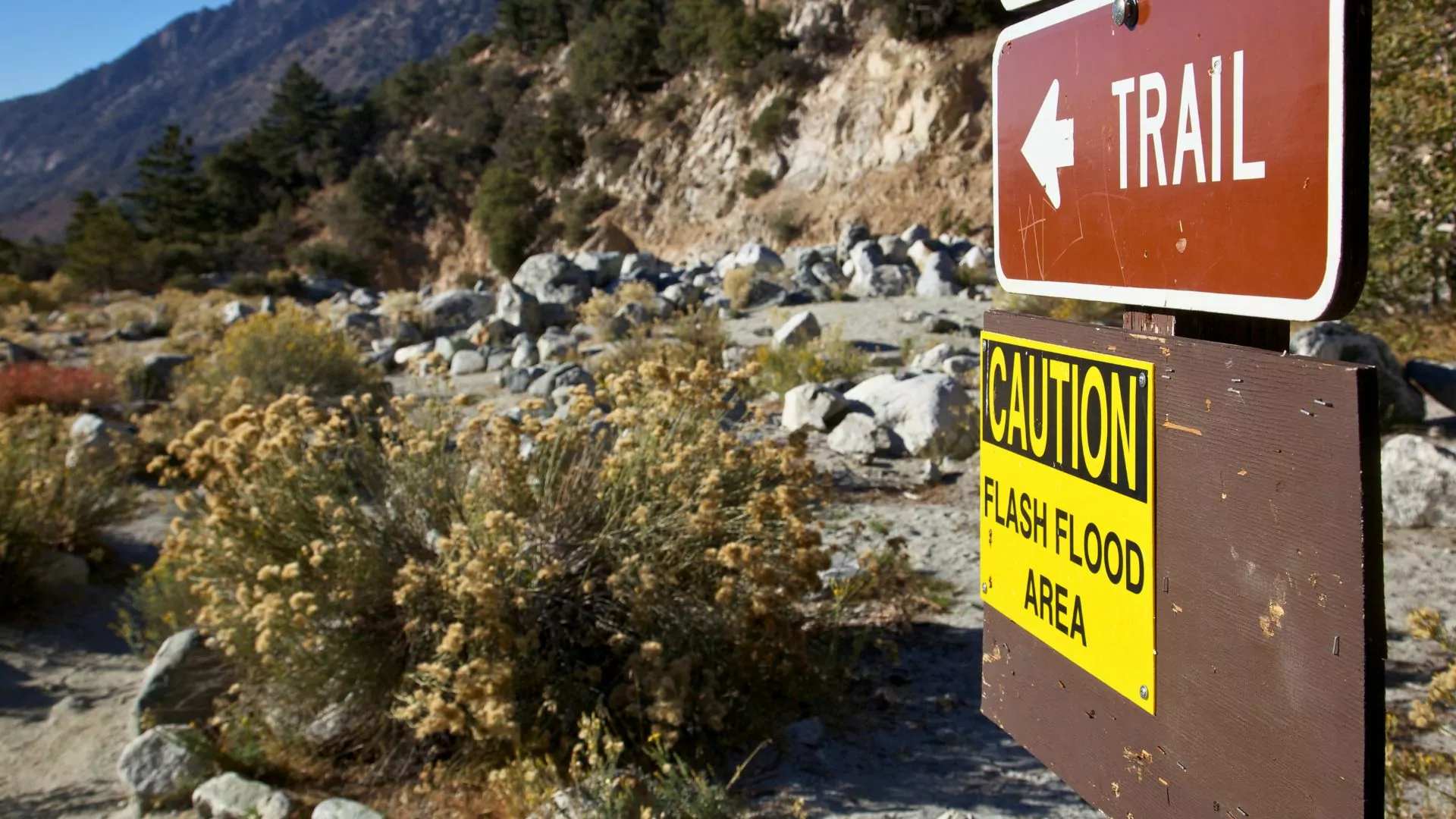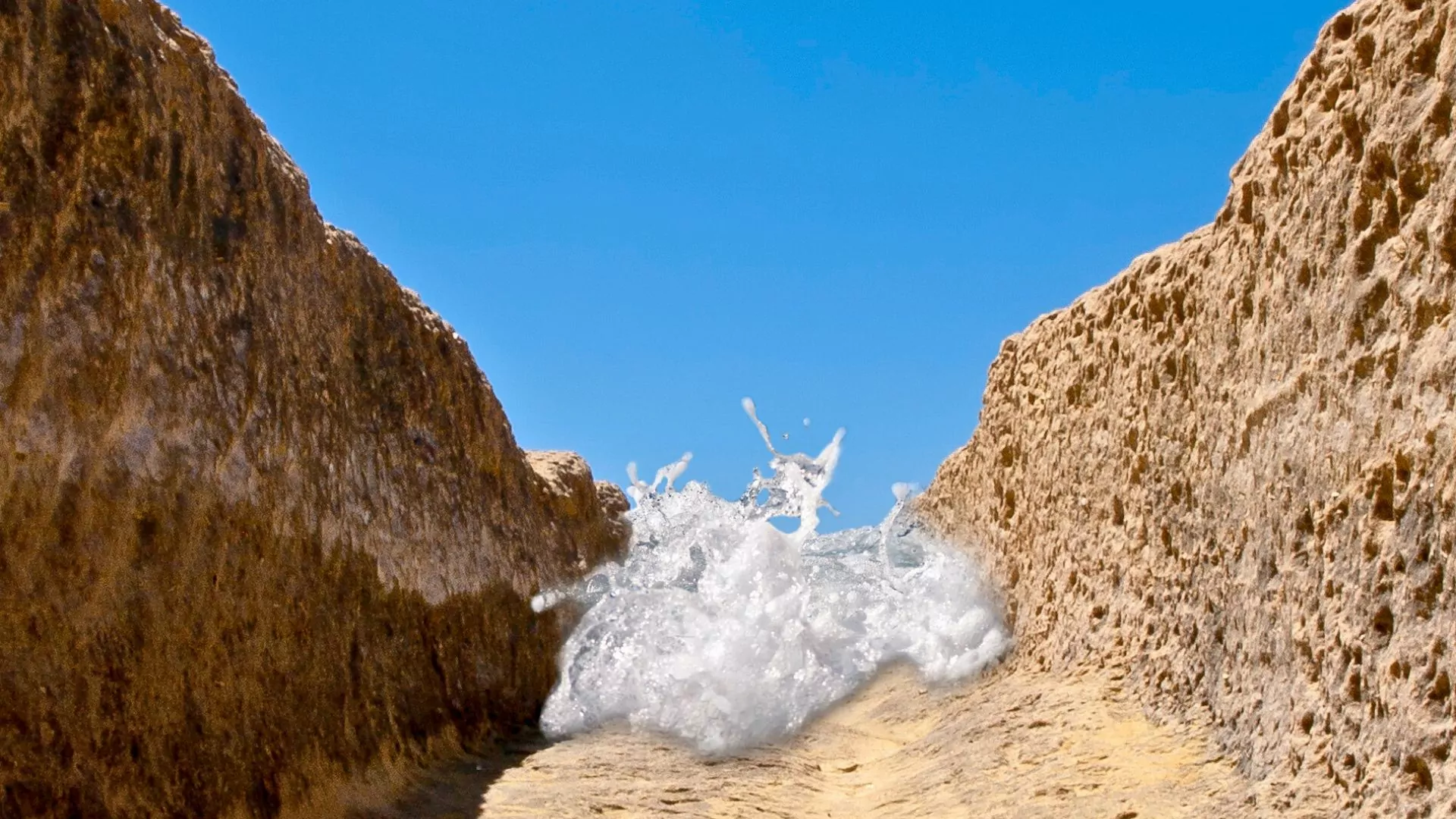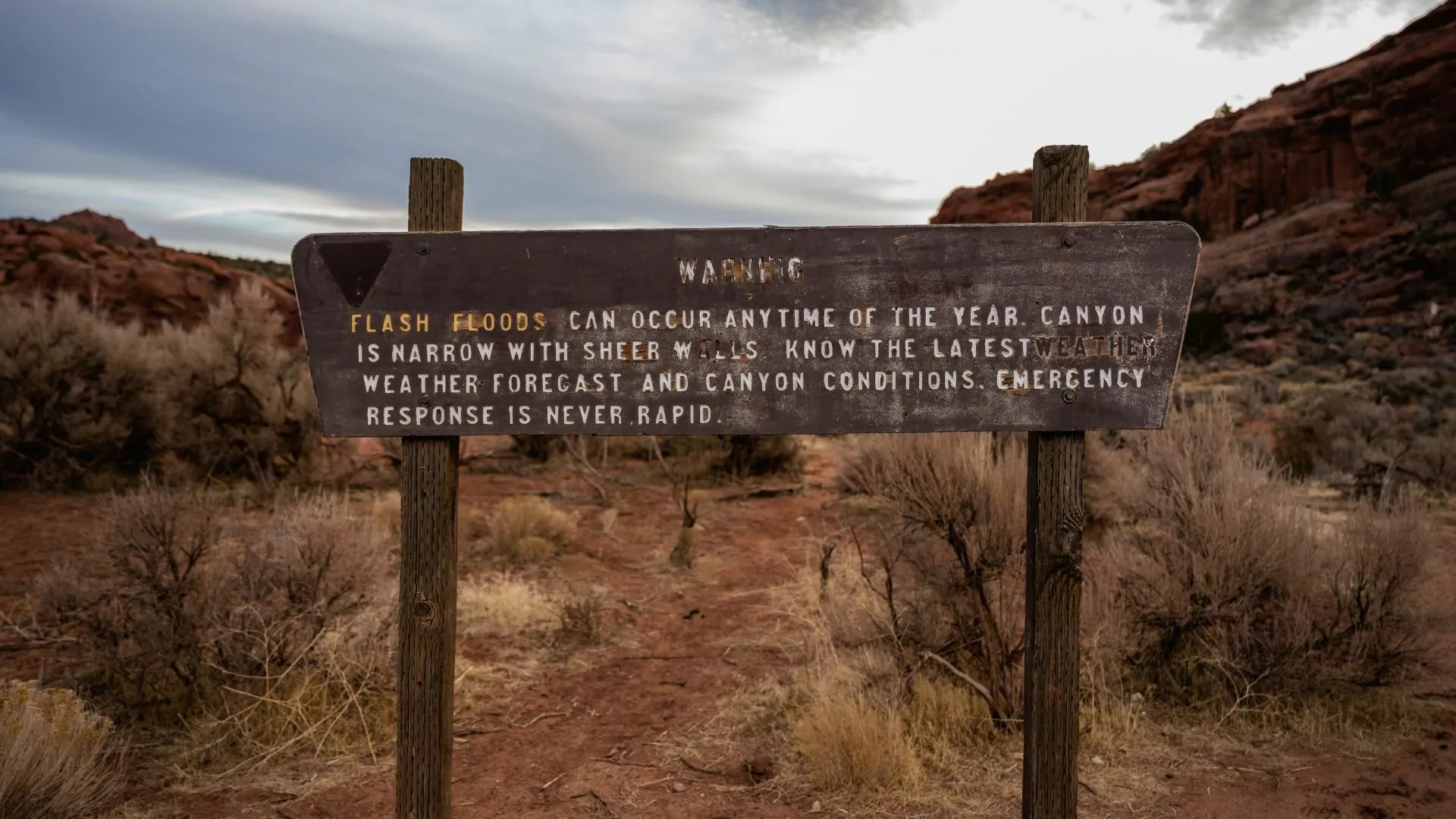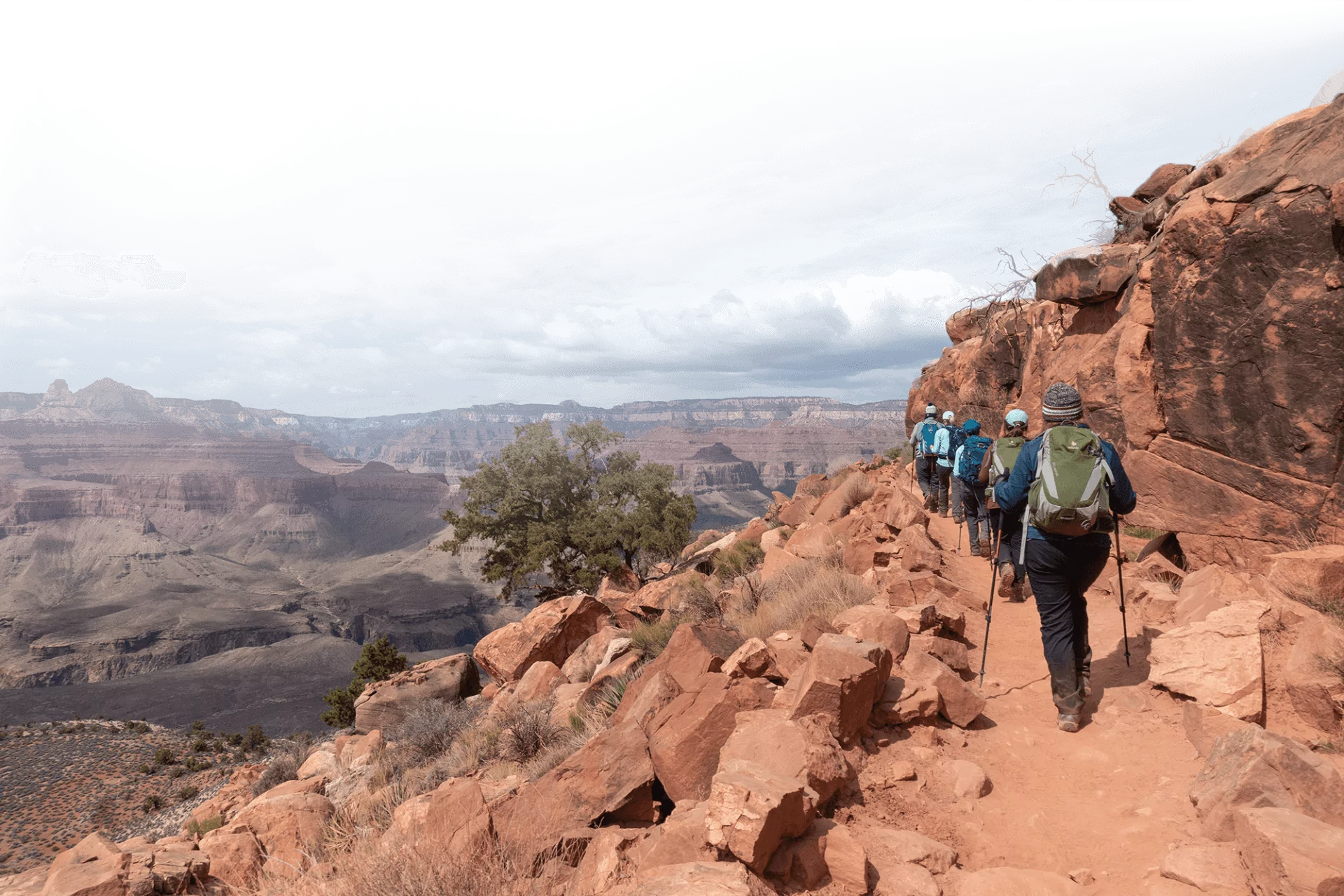Danger in the Desert: Flash Floods
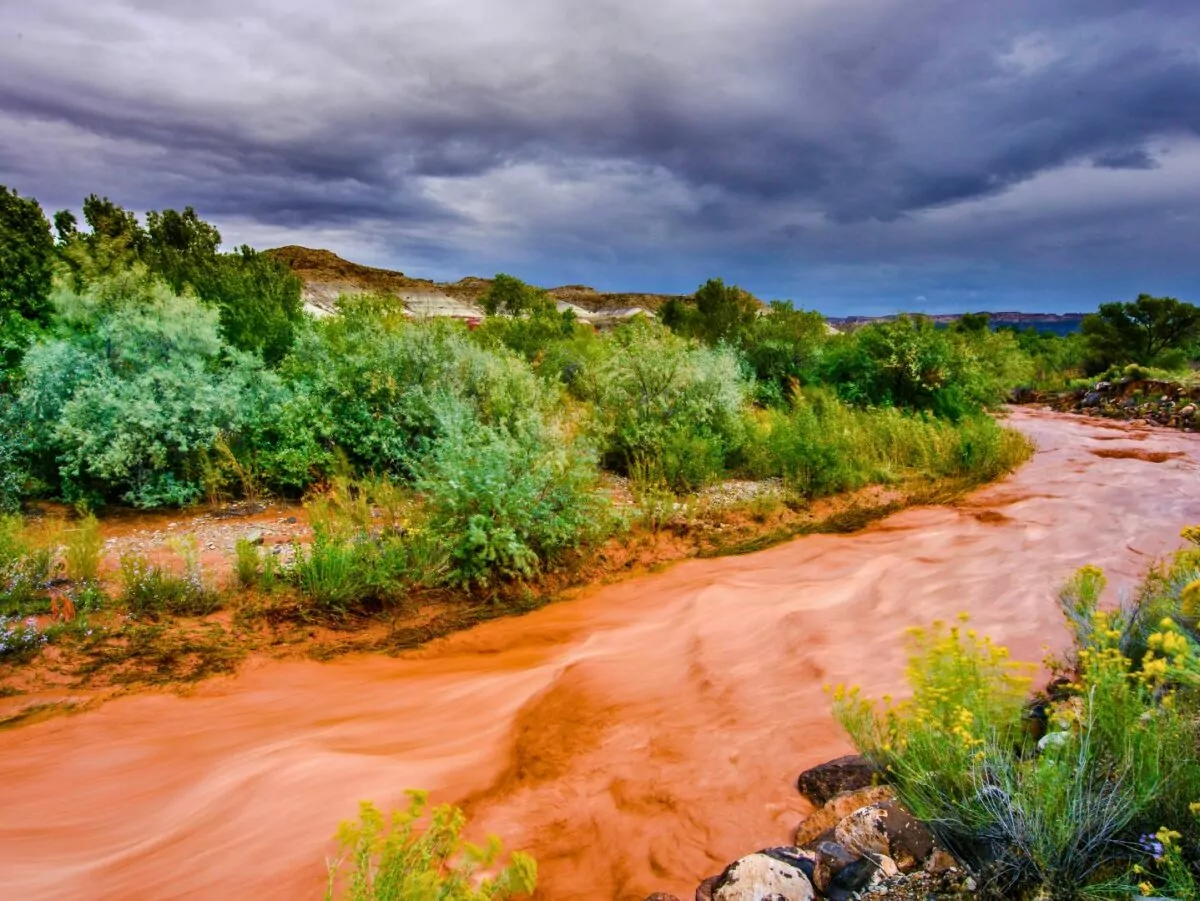
Every now and then, a headline will make nationwide news— Deadly Flash Flood Traps Hikers, 2 Dead. Flash floods are one of the most dangerous and sudden weather events that happen on our planet, and they seem to be increasing in frequency with more intense storms around the world. Whether you’re a first time hiker or season pro, this guide is designed to help you recognize the warning signs, minimize your risk, and react appropriately in flash flood conditions. I’ll also highlight some famous flash flood events that have occurred in popular U.S. hiking destinations in recent years.
WHAT IS A FLASH FLOOD?
Flash floods are so dangerous because they happen very quickly, and in areas that are typically very difficult or impossible to get out of. According to the National Weather Service (NOAA), the definition of flash flooding is “flooding that begins within 6 hours, and often within 3 hours, of the heavy rainfall (or other cause).” Rapid snow melting, a dam break, or a mudslide can also cause a flash flood. Situations involving already-saturated mud, concrete in a city, or soil after a fire (fire prevents the soil from being able to soak up water), cause flash flooding because the ground is unable to soak up any of the moisture. When the ground can’t contain the water, it all funnels to the lowest ground and quickly builds into a flood scenario.
Regular floods build over a more prolonged period of time, but flash floods happen with shocking speed— often within 30 minutes of precipitation. The chances of a flash flood are dramatically heightened in narrow canyons, where a seemingly harmless amount of water trickles down along the rim, sometimes miles up-canyon, and has very little space to spread out between narrow canyon walls. Steep mountain slopes also set the stage for floods because the water flows into drainages at a very fast rate. Stream and river banks can become overwhelmed and overflow, leading to rapid flooding of the land around them. Even in cities, where concrete blocks the absorption of water, heavy, intense rain can overwhelm drainage systems and lead to a flash flood.
When these floods occur, they are extremely powerful and dangerous. They can pick up vehicles and gigantic boulders with ease, even tearing trees out of the ground and carrying them miles downstream. This is one of the most dangerous parts of a flash flood. It is one thing to suddenly be caught in fast-moving water, it is another altogether when that water is filled with deadly debris.
FLASH FLOOD WARNING SIGNS
- Rising water: If you are ever hiking and notice a sudden rise in the water, even if it appears to be rising slowly, get out and to safety immediately, as this is one of the first signs of a flash flood.
- Rushing water: If you hear the distant roar of quickly-moving water, act rapidly. Assume that it is coming your way, and get to higher ground.
- Change in Water Quality: Flash floods can suddenly change water color and clarity. Observe the water frequently so that you can be alarmed if it changes from clear to muddy and murky. Similarly, if the water suddenly starts containing debris, be warned of what else it may be carrying downstream.
- Distant Storms: Pay attention and listen for the sound of storms in the distance. Even if it is sunny directly above you, there may be a storm close by but out of sight. Listen for thunder, and watch the radar on your communication device if you have one. Always remember that a storm much farther up-canyon from you can still carry water to your path.
How Lower your risk of being caught in a flash flood
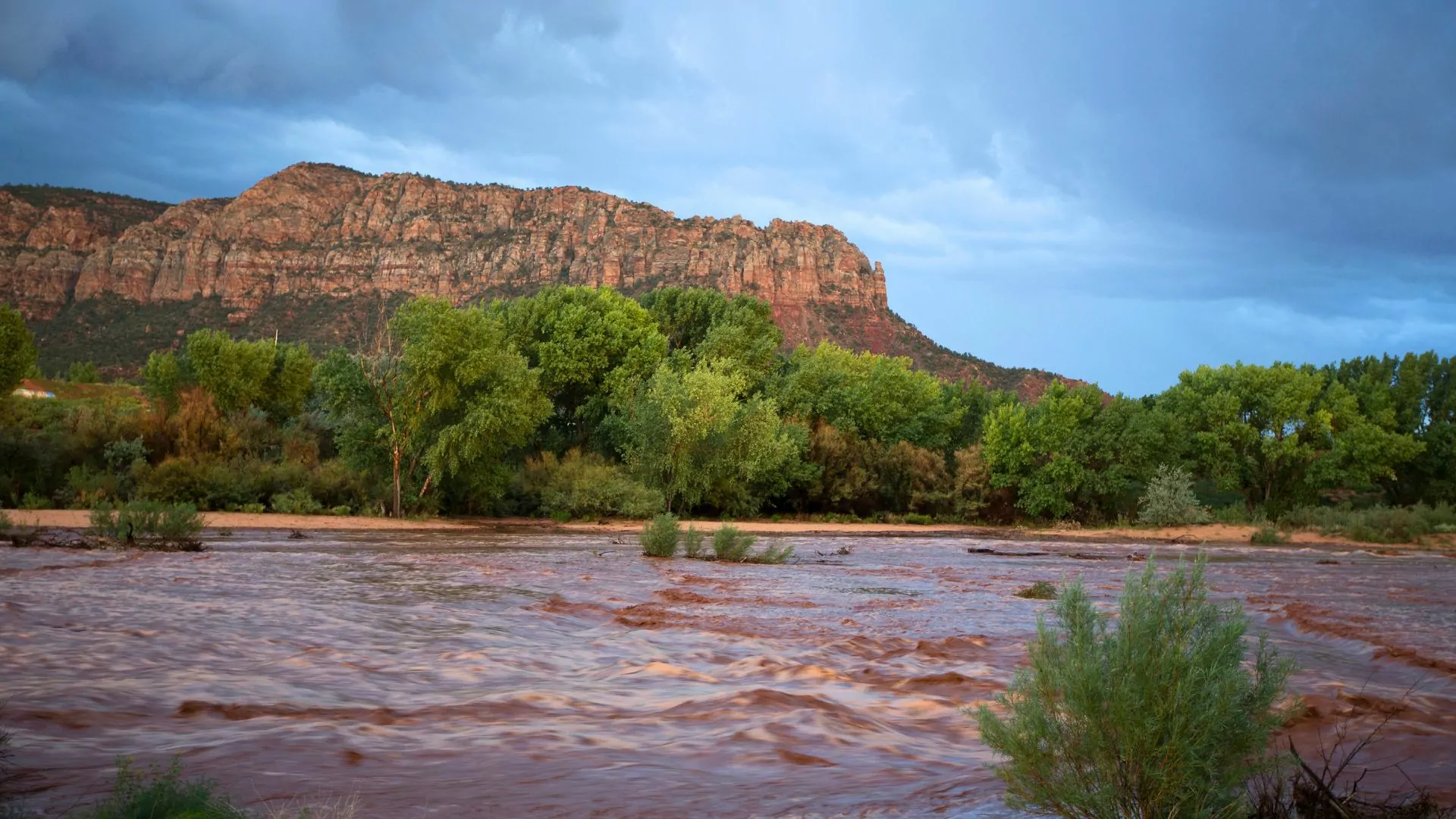 The number one way to lower your risk of being caught in a flash flood is by being informed and aware. It is important to know where you are (I.e. if you are in a zone that is prone to flash flooding), and what the weather forecast is. Because flood zones funnel large volumes of fast-moving water into the same area, it is vital to know the forecast for not only where you are standing, but also upstream, or up canyon, from where you are. It is common, and still surprising to people, that rainfall multiple miles up-canyon can cause a flash flood further down. Since upstream water cannot dissipate until the narrow walls of a canyon end lower down, there can be perfectly blue skies above you when a flash flood occurs.
The number one way to lower your risk of being caught in a flash flood is by being informed and aware. It is important to know where you are (I.e. if you are in a zone that is prone to flash flooding), and what the weather forecast is. Because flood zones funnel large volumes of fast-moving water into the same area, it is vital to know the forecast for not only where you are standing, but also upstream, or up canyon, from where you are. It is common, and still surprising to people, that rainfall multiple miles up-canyon can cause a flash flood further down. Since upstream water cannot dissipate until the narrow walls of a canyon end lower down, there can be perfectly blue skies above you when a flash flood occurs.
read: The Skinny on Slot canyons
If there is a chance of precipitation in or around an area that is prone to flooding, don’t go. There are always other options, and it is not worth the risk even if the storm is not supposed to be severe. Storm severity can change quickly, and we all know that you can never 100% rely on the forecast. Wait for a clear day and play it safe.
If you will have service in the potential flood zone, consider signing up for local emergency alerts. Flood watches mean that there is potential for flood conditions. Flood warnings mean that the flash flood is occurring or imminent. Severe weather warnings may also be issued. In any of those cases, get to safety immediately. While these alerts can be helpful and life-saving, do not rely on them alone, or discount the importance of staying vigilant and aware.
Pay attention to your entry and exit points. For example, as you are driving to a trailhead, did you pass by a low-point or wash that could offer a means of escape? If you are out hiking, always be alert and oriented to your path to higher ground.
WHAT TO DO IN A FLASH FLOOD
- Get to higher ground! This is impossible in some locations, which is why it is vital to pay attention before you get yourself in a situation that you can’t get out of. But, if possible, immediately seek higher ground.
- Don’t underestimate the power of water. Even just 6” of fast-moving water can knock you off of your feet, 12” can carry away a car, and 18-24” can carry a much larger vehicle. If you can avoid being in these conditions by staying put or turning around, do so!
- Wait it out! Don’t try to go back into the water until you are 100% sure the event is over. Be aware of debris and potentially hazardous water contamination. If you have an emergency device on you with the ability to send messages (you should always bring one!), consider reaching out to Search and Rescue dispatch to let them know where you are and what your plan is so they can help advise you.
Recent flash floods in the news
Yellowstone National Park, WY and MT
On June 13, 2022, Yellowstone experienced a 500-year flood event the National Park Services says only has a 0.2% chance of happening in any given year. Northern parts of the park along the Yellowstone River saw an unprecedented 8-10 inches of rainfall and rapid snowmelt in less than 24 hours. Massive mud and rockslides destroyed bridges and wiped out entire sections of road. Wastewater systems were damaged causing dirty water to flow into Gardiner river, and there was an extensive outage of power across the region.
The park did an outstanding job of informing and evacuating people in the area, and miraculously, no one was injured or killed.
Zion National Park, UT
On June 30, 2024, Zion National Park and its south entrance town of Springdale had one of the worst floods that it has seen in over 30 years. Over an inch of rain fell in a very short amount of time, triggering a flash flood. Because the desert environment can’t absorb water very well, the rain flooded the area with muddy water, debris, and broken asphalt. Roads, campgrounds, trails, and local businesses were severely affected. Zion sees frequent and dangerous flash floods in its slot canyons such as The Narrows, but this event was extensive and widespread. Another famous and destructive local flood in 2016 killed 13 people in the nearby town of Hildale, as well as 7 hikers in Zion National Park.
Paria Canyon, AZ/UT Border
Paria Canyon in the Paria Canyon-Verimillion Cliffs Wilderness is also notorious as a backpacking route with extreme flash flood danger. The hike takes place in a deep and narrow 20-mile-long canyon, providing little to no opportunity to climb to higher ground for an escape or exit. In March of 2023, 2 hikers were killed and 1 other was severely injured when a flash flood swept through the canyon. At least 10 other hikers in the area were also rescued during the same event.
DON’T RISK IT
With global climate change making storms more intense, we are sure to see an increase in extreme weather phenomena such as flash floods. No one ever expects the worst to happen to them, but when it comes to flash floods, it is extra important to err on the side of caution. If the worst case scenario does arise,the results can be fatal. Pay attention, call a ranger station for advice, make educated and cautious decisions, and be ok with altering your plans to stay safe. It’s just not worth the risk.



